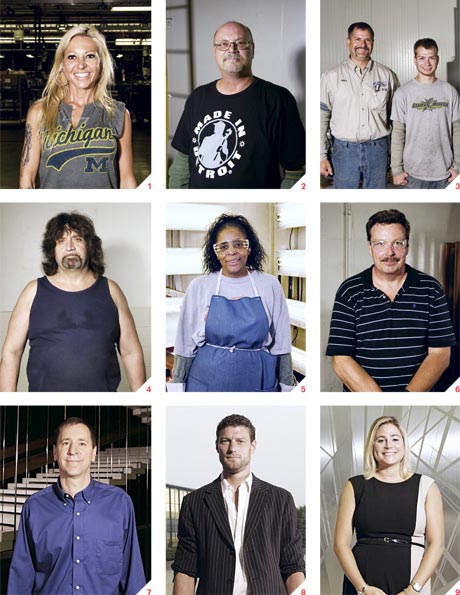Buried near the back of the October 2012 issue of Esquire, parked behind articles about Clint Eastwood, Mitt Romney, and vodka, is “How to Build An American Car,” a beautiful look at the people behind a new model of Cadillac.
A story like this could be dull and tedious. Manufacturing is not usually a sexy, interesting topic. And a story about a new automobile sounds like something you’d read only if you were trapped in a dental office with no other option. But this is a brilliant work of research and writing by author Justin Heckert.
The story of the Cadillac ATS is really the stories of all the people who created it. It’s about people like Taki Karras, the designer who created the look of the car; Rick Kewley, the man who tests the steering wheel; Matt Highstrom and Cody Hansen who developed the on-screen interface, Ray Kiefer who designed the seat, Michele Killen who developed and picked the colors of the paint, and Stacey Silver, who installs parts of the taillights on the assembly line.

Photo by Andrew Tingle
What makes Heckert’s story so effective is all the rich background and anecdotes we get on the people featured in the story. It’s a dozen personal profiles packed into a single story. Short-form and long-form collide.
For example, when he writes about Rick Kewley, the steering wheel expert, he describes Kewley’s hands, and how they compared to the hands of his father, also an autoworker:
Outstretched, the end of Rick Kewley’s pinkie to the tip of his thumb measures ten inches. He uses this measurement when he’s at Lowe’s looking for hardware, and he has been aware of that distance ever since his fingers stopped growing. He has a story about his hands. It’s short and sweet. When he was a boy, his father would place his hand and his son’s side by side, as a way to check how much the adolescent Kewley had grown. At some point a long time ago, Rick’s hands became larger than his father’s. Now Rick’s son, by the same measuring method, already has hands slightly larger than his.
When we meet Taki Karras, the designer who came up the with the shape and body for the car, we learn about his childhood in Dayton, Ohio and his early fascination with cars and design:
His father owned a grocery store in Dayton, Ohio, called Karras Market, on Wilmington Pike. There was a magazine rack at the store. Taki couldn’t reach the top row, which was stocked with auto magazines, so he used to ask people in the store for them, used to point. He would draw sketches of cars in the break room of the grocery store, Lamborghinis, Lotuses, cars people only dream of. One summer, when he was eleven, he was on a flight home from Greece with his family, and he was holding a toy Ferrari. A woman sitting next to him asked, “Do you want me to draw that for you?” She was an artist. She spent the flight staring at the toy Ferrari and working at her seat on the pull-down tray. When the flight was almost over, she handed him the finished picture as a gift.
Later, Heckert takes us on the road with the on-screen user experience designers and lets us ride along as they meet and study real-world drivers:
Cody met a man with a parrot. This was in San Francisco. The man with the parrot drove an old Infiniti. As he was driving, he turned to Cody, who was silently watching him, taking notes on a digital sketchbook. The man looked at a regular button on the side of his stick shift. He pointed to the button. “This is my Turbo button!” he said, and turned again toward the road. After their ride, Cody went into the man with the parrot’s apartment. They were sitting on a couch amid the clutter, facing each other. The man with the parrot was talking about his fiancée. How she liked to sunbathe in the nude. The parrot took a giant shit on his shoulder and he just kept talking.
Matt and Cody and the other members of the team met people who yelled at their kids. Who texted while driving. Who talked on the phone so much that members of team Journey wanted to stop taking notes and smack them. One woman asked the man next to her at a stoplight if he wanted to go on a date.
What makes this story brilliant is that it’s assembled with characters and little stories and moments like these that make it all a rich, human experience and puts faces on what would typically be an invisible, hidden process. Structurally, the story goes through the car, piece by piece, and we find out about real people who have some role in those parts. In the end, when Heckert describes the first-ever model of the Cadillac ATS coming off the assembly line and driving off into the world, the reader that every new car has hundeds of human stories behind it.